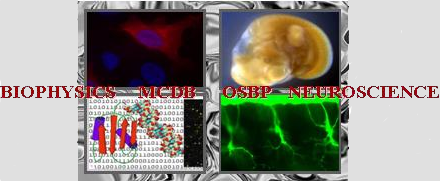Poster abstracts
Poster number 54 submitted by Konur Oyman
Gilteritinib treatment induces mesenchymal stromal cell expansion in FLT3-ITD+ zebrafish
Konur Oyman (Molecular, Cellular, and Developmental Biology Graduate Program), Wantong Li (Molecular, Cellular, and Developmental Biology Graduate Program), Annika Chura (Molecular, Cellular, and Developmental Biology Graduate Program), Sharyn Baker (Division of Pharmaceutics and Pharmacology, College of Pharmacology), Bradley W. Blaser (College of Medicine, Department of Internal Medicine, Division of Hematology)
Abstract:
In acute myeloid leukemia, internal tandem duplication mutations to FMS-like tyrosine kinase III (FLT3-ITD) are associated with increased risk of relapse. Gilteritinib is the current mainstay for treating relapsed/refractory FLT3-ITD AML, however therapy is often non-curative. How the hematopoietic niche can be remodeled in response to FLT3-ITD and treatment by FLT3 inhibitors to induce therapy resistance represents a critical unanswered question in improving treatment for FLT3-ITD AML.
Here we enforce expression of human FLT3-ITD by hematopoietic stem and progenitor cells (HSPCs) in transgenic zebrafish using a defined Runx1 enhancer element. Runx1:FLT3-ITD(+) animals had greater numbers of HSPCs compared to transgene-negative clutchmates. When treated with 100 nM gilteritinib from 72-96 hours post-fertilization (hpf), reduced HSPC numbers were observed in both groups, however Runx1:FLT3-ITD(+) animals demonstrated greater HSPC numbers compared to Runx1:FLT3-ITD(-) counterparts. To investigate this trend more deeply, single cell RNA sequencing was performed on FLT3-ITD(+) and FLT3-ITD(-) animals treated with or without gilteritinib. Enforced expression of FLT3-ITD expanded HSPC and contracted the mesenchymal stromal cell (MSC) population in untreated animals. Conversely, FLT3-ITD(+) animals treated with gilteritinib demonstrated a reduction in HSPCs and an expansion in MSCs.
Analysis of this MSCs population revealed multiple potential mechanisms of early gilteritinib resistance. Lepr MSCs were top-expressing cells for several active signaling molecules. Lepr MSC populations also strongly expressed direct and indirect cell interaction factors. This could point towards alternative modalities of niche remodeling via cell-cell contact or soluble factor-mediated signal transduction.
Together, these data suggest that gilteritinib treatment induces expansion of MSCs expressing signaling factors that may lead to therapeutic resistance in FLT3-ITD AML.
Keywords: Acute Myeloid Leukemia, FLT3, Mesenchymal Stromal Cell
